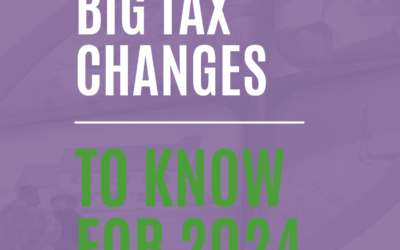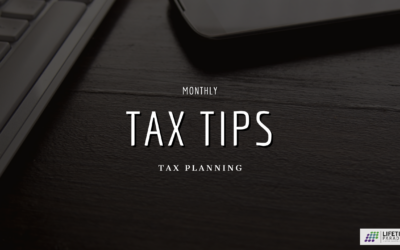Tax Planning
The Smart Tax Planning Newsletter June 2023
In this issue:
-
Act Now to Qualify for your 2020 and 2021 ERC Money
-
Claim Your 2020 Covid Sick and Family Leave Credits Today
-
Cleaning Personnel and Your Home-Office Deduction
-
Shutting Down a C Corporation
Act Now to Qualify for Your 2020 and 2021 ERC Money
It’s 2023, but you still have the chance to qualify for the employee retention credit (ERC) for the 2020 and 2021 calendar years. This credit can potentially help you recover a significant amount of money. The ERC is a refundable tax credit against certain employment taxes.
To claim this credit, it is necessary to amend your payroll tax returns for 2020 and 2021. While this might seem like a cumbersome process, the financial benefits can make it well worth the effort. For instance, if your business has 12 employees and meets the qualifications for maximum tax credits, you could receive a total of $312,000. Remember, this is a tax credit and not a deduction, which means that is tax-free cash in your pocket. There are two primary routes to qualifying for the ERC:
- A decline in gross receipts. The most straightforward way to qualify is by demonstrating a decline in your gross receipts during the years 2020 and 2021. It is important to note that the decline does not have to be directly caused by COVID-19. Also, keep in mind that even if you did NOT have a decline in gross receipts that you still may qualify for the credit using other criteria.
- Government order causing more than a nominal effect. If a government order caused your business to fully or partially shut down, you might qualify for the ERC for the wages paid during the shutdown period.
The deadline to claim the ERC for 2020—April 15, 2024—is about 10 months away. We strongly recommend that you act promptly to maximize your potential benefits from this program. If you own a business, you have likely been solicited by individuals or a business to apply for these benefits. There are even television advertising promoting this opportunity. However, it is crucial to exercise caution when selecting a partner to assist you with preparing your revised tax returns and the ERTC application. You need to ensure that whoever you choose will be available to support you throughout the entire process. Many of the firms promoting this service are merely temporary marketing firms looking to cash in on a quick buck.
With that said, if you haven’t explored this opportunity yet, we encourage you to do so. If you are eligible, you don’t want to leave money on the table. If you would like assistance, we are available to help with this process. Please don’t hesitate to contact us for more information and details.
Claim Your 2020 Covid Sick and Family Leave Credits Today
You may have overlooked potential COVID-19 sick and family leave tax credits on your 2020 tax return. You might be eligible for up to $15,110 in tax credits, and the good news is that it’s not too late to claim them. The IRS allows amended tax returns, so you can claim the credits today. Please be aware that you should act soon because the timeline for submitting amended returns is limited.
To realize the $15,110 in maximum tax credits, you must meet the following requirements:
- Adequate 2020 income ($143,866 of net income if you’re self-employed, or equivalent W-2 income if you’re an employee of your corporation)
- An inability to work in 2020 due to COVID-19
- A son or daughter who is either under age 18 or incapable of self-care because of a mental or physical disability
The law divides the credits into two categories:
- Up to $5,110 for individuals unable to work due to COVID-19-related reasons
- Up to $10,000 for individuals who cared for a child due to COVID-19
If you are self-employed and qualify, you can claim the credits by amending your 2020 tax return and filing a completed 2020 Form 7202 (Credits for Sick Leave and Family Leave for Certain Self-Employed Individuals) along with IRS Form 1040-X.
For corporation owners, if your corporation paid you while you were not working due to COVID-19, your corporation may qualify for sick or family leave tax credits. If your corporation has not claimed the credits in its 2020 returns, it can amend its payroll tax returns using Form 941-X. Please note that there’s a three-year statute of limitations for correcting payroll tax overpayments on Form 941-X; for 2020, that means it expires on April 15, 2024.
Also, please be aware that you cannot receive double benefits. If you received assistance through the Paycheck Protection Program (PPP), the ERC, or similar programs, you cannot claim the same self-employed income or employee wages for the COVID-19 sick and family leave credits.
Cleaning Personnel and Your Home-Office Deduction
If you have an office in your home that qualifies for the home-office deduction and you employ someone who maintains both your home and your home office, there are a couple of tax considerations to keep in mind.
The amount you pay your cleaning person(s) for services can have an impact on your taxes. Let’s assume you pay $200 every two weeks, totaling $5,200 annually. Say your office is 15 percent of your home. In this case, you pay $780 to clean your office and $4,420 to clean your home.
Here are two key questions:
- Should you pay your personnel through a W-2 or a 1099 for the office cleaning?
- Do you need to pay the Nanny Tax for the home cleaning?
The answers depend on whether the cleaning person is considered an independent contractor or an employee. Given the conditions of their work — cleans with little or no direction, provides own supplies, and cleans many other houses—this exhibits the characteristics of an independent contractor.
Accordingly, for the $780 you paid her to clean your office, you should provide a 1099-NEC form.
On the personal front, you are not liable for the Nanny Tax because the cleaning personnel that qualifies as an independent contractor. Please note that if you fail to file Form 1099-NEC, you could face an intentional disregard penalty of $630 or more for each missed form.
Shutting Down a C Corporation
There are several tax implications that you need to be aware of when shutting down a C corporation. Complete liquidation of a C corporation is when it ceases to be a going concern, winds up its affairs, pays its debts, and distributes its remaining assets to the shareholder(s). In tax terms, the corporation redeems all its stock, and during the redemption, there can be one or more distributions pursuant to a plan.
While not mandatory, having a written plan is advisable because it establishes a specific start date for the liquidation process. This helps differentiate between regular dividends and liquidating distributions.
There are three ways your corporation can achieve liquidation:
- Distribute all of the corporation’s assets to the shareholder(s).
- Sell all its assets, and distribute the proceeds.
- Sell some assets, and distribute the resulting sales proceeds and unsold assets.
The bottom-line federal income tax results for all these options are similar for the corporation and the shareholder(s).
If your corporation distributes property other than cash during liquidation, it must recognize taxable gain or loss as if the distributed property had been sold for its fair market value (FMV).
As a shareholder, you treat the liquidating corporate distribution as payment in exchange for your stock. You recognize taxable capital gain or loss equal to the difference between the FMV of the assets received and the adjusted basis of the stock you surrender.
The complete liquidation of a C corporation with appreciated assets often results in double taxation—once at the corporate level and again at the shareholder level. Hence, the timing could be critical depending on your situation and future changes in tax rates. As of 2023, the maximum individual federal income tax rate on long-term gains from a corporate liquidation is 20 percent, or 23.8 percent if the 3.8 percent net investment income tax applies.
Once you decide on a complete corporate liquidation, the Board of Directors should adopt a plan and file Form 966 (Corporate Dissolution or Liquidation) with the IRS within 30 days of adopting the liquidation plan. The corporation should then file its final tax returns.

SERVICES WE OFFER RELATED TO THIS TOPIC
The information contained in this post is for general use and educational purposes only. However, we do offer specific services to our clients to help them implement the strategies mentioned above. For specific information and to determine if these services may be a good fit for you, please select any of the services listed below.
The 4x4 Financial Independence Plan ℠
Estate Planning
Retirement Planning
Tax Planning
Coaching and Consulting
Your Co-Owned Business Probably Needs a Buy-Sell Agreement
Tax PlanningBradford Tax InstituteSay you’re a co-owner of an existing business. Or you might be buying an existing...
Big Tax Changes to Know for 2024
Financial Guides2024 has brought some big tax changes with it. It’s essential to stay informed about these...
The Smart Tax Planning Newsletter March 2024
Tax PlanningIn This Issue: IRAs for Young Adults Get Up to $32,220 in Sick and Family Leave Tax Credits New Crypto Tax...
Investment Advisory Services are offered through Lifetime Financial, Inc., a Registered Investment Advisory. Insurance and other financial products and services are offered through Lifetime Paradigm, Inc. or Lifetime Paradigm Insurance Services. Neither Lifetime Financial, Inc. nor Lifetime Paradigm, Inc., or its associates and subsidiaries provide any specific tax or legal advice. Only guidance is provided in these areas. For specific recommendations please consult with a qualified, licensed Advisor. Past performance is no guarantee of future results. Your results can and will vary. Investments are subject to risk, including market and interest rate fluctuations. Investors can and do lose money and, unless otherwise noted, they are not guaranteed. Information provided is for educational purposes only and is not intended for the sale or purchase of any specific securities product, service or investment strategy. BE SURE TO FIRST CONSULT WITH A QUALIFIED FINANCIAL ADVISER, TAX PROFESSIONAL, OR ATTORNEY BEFORE IMPLEMENTING ANY STRATEGY OR RECOMMENDATION DISCUSSED HEREIN.
This message is intended for the use of the individual or entity to which it is addressed and may contain information that is privileged, confidential and exempt from disclosure under applicable law. If you are not the intended recipient, any dissemination, distribution or copying of this communication is strictly prohibited. If you think you have received this communication in error, please notify us immediately by reply e-mail or by telephone (800) 810-1736 and delete the original message.
This notice is required by IRS Circular 230, which regulates written communications about federal tax matters between tax advisors and their clients. To the extent the preceding correspondence and/or any attachment is a written tax advice communication, it is not a full "covered opinion." Accordingly, this advice is not intended and cannot be used for the purpose of avoiding penalties that may be imposed by the IRS.






